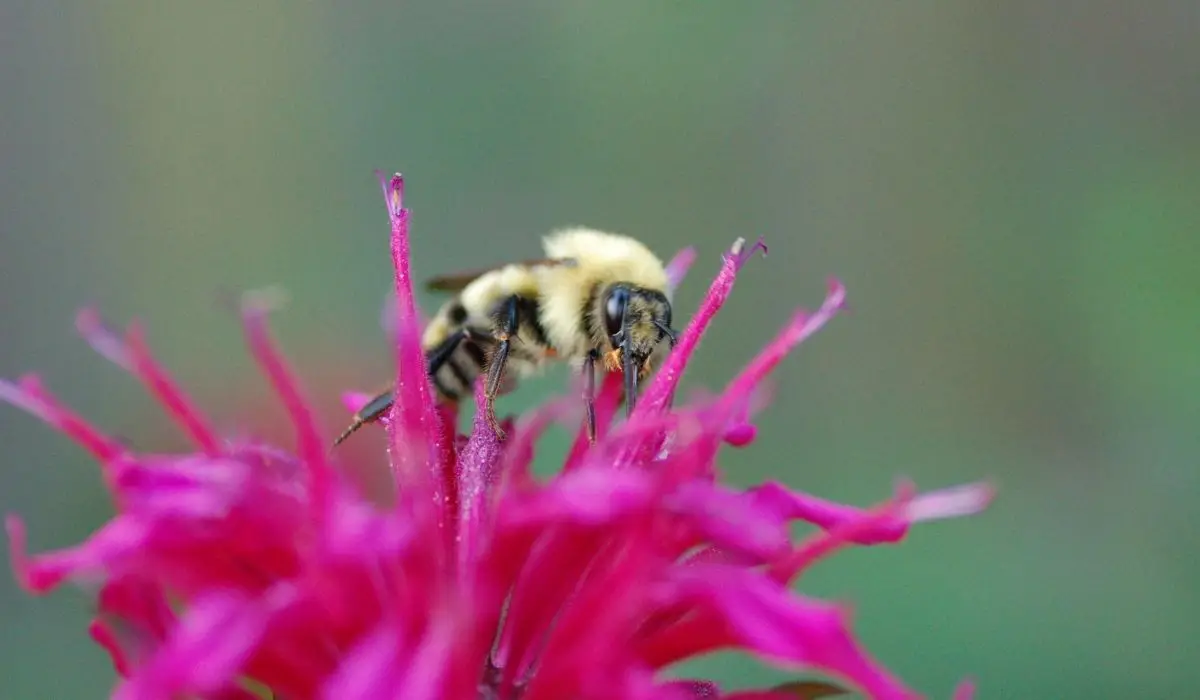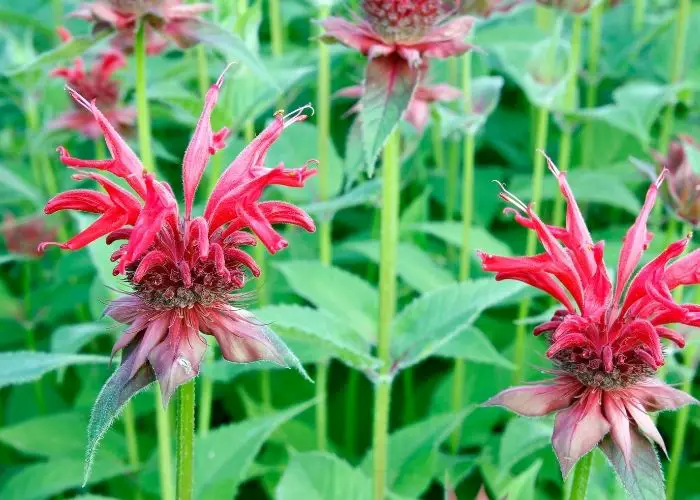Last Updated on November 26, 2021 by
Bee balm, also known as Monarda, is a very popular plant among gardeners, with many beginner gardeners wondering when does bee balm bloom. The reason this perennial is so popular isn’t just its beauty, but also its practicality! It attracts a lot of insects, mostly bees and butterflies, as well as hummingbirds because of its blossom! In this article, we’ll be taking a closer look at the plant itself, its blooming process, and maintenance.
Bee Balm Bloom Time
The blooming period of the bee balm is quite long.
Typically, these plants bloom in July and the blooming lasts throughout the whole summer!
If you’re wondering how to deadhead a bee balm, this is the perfect time for it. Deadheading is great for propagating growth, so it’s best to deadhead the plant throughout the whole blooming period! The best and the simplest way to achieve this is to cut above the next flower bud when a flower begins to fade.
It’s important to cut the flowers as soon as you see them fading. If you don’t, the plant will focus its energy on producing seeds! You want to avoid this, and deadheading the plant will concentrate the energy on growing flowers!
Once the stem is completely done with flowering, feel free to cut it down to the ground! When the next blooming season comes around, the stem that grows out will be very rich in flowers!
Deadheading, however, isn’t good only for propagating flower growth! It’s also useful when it comes to taking care of the plant’s health! Since the circulation of air will increase when you deadhead your bee balm, the chances of developing powdery mildew or fungus become considerably smaller!
Why Isn’t My Bee Balm Blooming?
Just like any plant, it’s possible that you’re seeing a lack of flowers this season. Worry not, as your problem is likely on this list!
The most common problems with bee balms are lack of sun, overfertilization, overwatering or underwatering, and age.
Lack of sun is the most common issue. These plants enjoy spending time in the sun, and they need at least 6 hours every day to grow and stay healthy. If you know that your bee balm is in a spot with little sun, then that’s the most likely reason behind your poor blooming! Relocate your plant to a different spot and you’ll be all set for the next flowering season!
They also don’t like to be overfertilized – these plants don’t feed too much and they don’t need that many nutrients. If you overfertilize them, they’re more likely to develop a lot of foliage, but not a lot of flowers!
Overwatering and underwatering are quite simple! They don’t like to be drowned, but they don’t like to be left out to dry either. If you’re having a particularly dry season – water them once a week and make sure you water them deeply! It’s also not uncommon to develop problems with humidity, especially if you live in a particularly humid place!
Lastly, just like all living beings, your plant will age. If you see that your monarda is blooming less after a few years, the best course of action would be splitting it in order to rejuvenate it!
About The Bee Balm
The bee balm, also popular under the name “Monarda“, is a perennial plant. You will very often find them in bee gardens, as they’re very attractive to bees, butterflies, other insects, as well as hummingbirds. The reason for this is their fragrant blossom! There are more than 15 species of the bee balm, with wildly ranging colors, the most popular one being red.
Common Uses
Even though the bee balm is nowadays mostly used as a decoration, it was traditionally used for medical purposes! The name “bee balm” actually comes from its use – Native American tribes would use it as a balm for soothing bee stings. They would crush the leaves and rub them on the skin. It’s also known that the settlers used the leaves of this plant to make tea, called Oswego tea!
This tea would help with headaches and a sore throat, as well as nausea, vomiting, and some other symptoms. A reason it was so useful hides in the leaves – thymol, a powerful antiseptic, is present in bee balm. That’s why this plant was so useful as a balm.
Planting, Growing And Caring
It’s best to plant your bee balm in the spring, while some gardeners also plant them in the fall. When deciding on a spot, pick a spot in the sun, as they need at least 6 hours of sun per day. Make sure that there are at least two feet of space in between plants and water them a lot after planting!
It’s important for the soil to remain moist throughout the season while adding mulch will help control moisture. Moisture is very important because of the powdery mildew that we’ve already mentioned. This will occur if humidity is too high, which is why controlling it is important.
It’s best to deadhead your plant throughout the blooming season. Dividing your plant is a smart thing to do every two to three seasons. This will ensure that the flowers don’t lose their potency.
These plants usually don’t grow taller than 4 feet, and the plant can become invasive and spread underground. This is why it isn’t uncommon to actually need to eradicate the plant from time to time unless you want it to spread like weeds.
In conclusion, the bee balm will bloom in July and the bloom will last throughout the whole summer. During this period, it’s best to deadhead your plant. This will have an amazing effect on every bee balm flower, as they’ll regrow throughout the summer. When you’re planting these plants, know that they need a lot of suns, at least 6 hours per day. A lack of sun exposure is one of the most likely reasons your bee balm isn’t blooming right. However, overfertilization, overwatering and underwatering, as well as age are all possible reasons for a bad performance.
Learn more about When To Plant Hyacinths.




